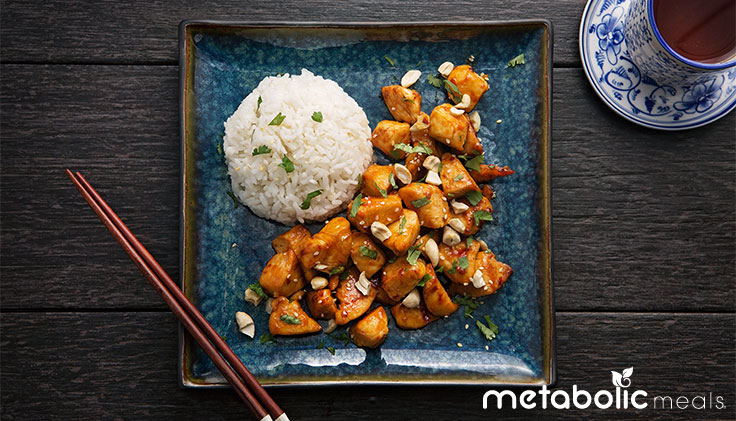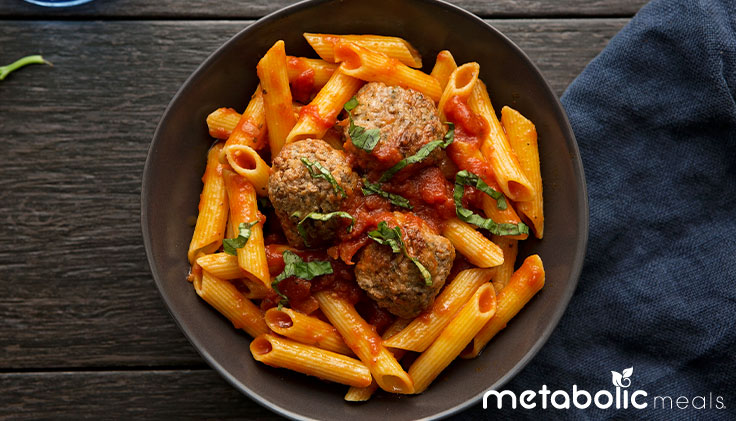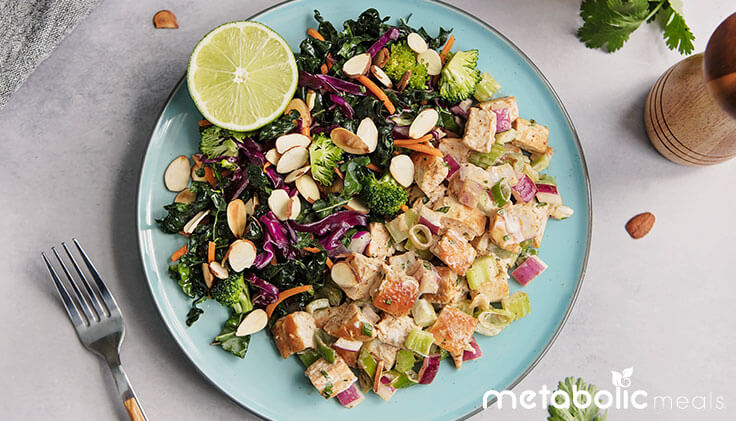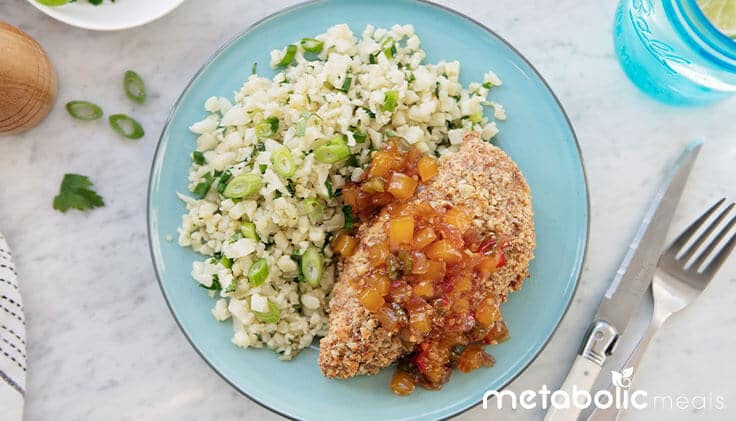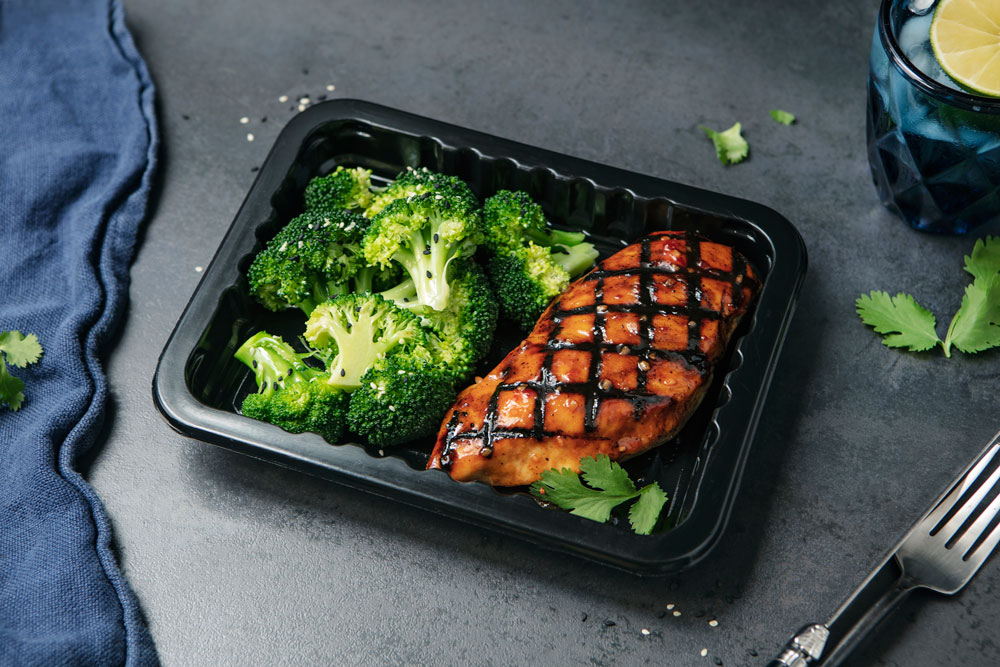ARTICLE AT A GLANCE
Struggling to eat healthier? It doesn’t have to be hard if you take a few shortcuts (seriously). Substituting certain ingredients for healthier alternatives that taste just as great can help you stick to a plan without giving up the meals you love. In this blog, we’ll reveal four stand-in foods we use in our entrées now so that you can give them a try in your kitchen, too:
Dieting is something many people struggle with; in fact, there’s evidence that it generally doesn’t work. Feelings of deprivation, intense cravings, social pressure, and the inconvenience of meal prep can all play a role in derailing even the most dedicated dieters. However, if you adopt ways to eat smarter, you’ll have a much better chance at being consistent with healthy eating and reaching your goals without ever needing to “go on a diet.”
One of the ways you can eat smarter is by substituting not-so-healthy foods with similar foods that are better for you. With a few strategic ingredient swaps, you can still enjoy your favorite recipes without sacrificing the flavors you love. Our chefs use healthy food swaps in our kitchen every day to craft meals with the most nutritional content, the highest quality of ingredients, and the best taste possible.
To help you simplify and sustain healthy eating, we’re going to share some trade secrets. Here are four food swaps we use in our meals now, and that you can try, too:
1. Coconut Aminos for Soy Sauce
Coconut aminos are a great alternative to soy sauce, a widely-used condiment and flavor enhancer. Coconut aminos contain just two ingredients – coconut tree sap and salt. They still have the same salty, umami flavor with a much lower sodium content and a slightly milder taste than traditional soy sauce. This makes coconut aminos popular in the paleo community and for those who avoid soy for health reasons. Soy allergies are very common, especially among children.
Even if you’re not allergic, soy can still cause hormonal issues. Phytoestrogens in soy mimic real estrogen and bind to the body’s estrogen receptor sites, blocking the hormone from entering and leaving the cells and instead forcing it to wander through the bloodstream. Heavy consumption suppresses thyroid function, which can lead to fat gain, muscle loss, infertility, mood swings, and sexual dysfunction.
That’s why we never use any ingredients containing soy to prepare our meals.
If you’re a clean eater or following a paleo, autoimmune protocol, or Whole30-style diet, coconut aminos are an excellent alternative to soy sauce. Use them in stir fry dishes, to marinate meat, or as a delicious dipping sauce.
How We Use It: Kung Pao Chicken with Jasmine Rice
2. Chickpea Pasta for Wheat Pasta
Celiac disease, a chronic autoimmune disorder of the small intestine caused by an intolerance to gluten, continues to be an issue in the U.S. It’s estimated that this condition affects at least 3 million Americans. Even if you don’t have celiac disease, there’s evidence that a gluten-free diet can still have extensive health benefits like improved digestion, better brain function, and lower levels of inflammation.
Since wheat contains gluten, switching out wheat-based products for foods that are naturally gluten free can let you reap these health benefits, plus provide you with more protein, vitamins, and minerals. Chickpea pasta, for example, is a fabulous gluten-free alternative to traditional wheat pasta. Not only is making the swap beneficial for people sensitive to gluten, but the macronutrients are substantially better: chickpea pasta has fewer calories per serving than wheat pasta with double the protein and double the fiber. Enjoy it in any of your most-loved pasta dishes, hot or cold.
How We Use It: Penne Pasta Al Pomodoro with Grass-Fed Bison Meatballs
3. Avocado Oil Mayonnaise for Soybean Oil Mayonnaise
Mayonnaise is one of the most popular condiments in the U.S., and the overwhelming majority is made with soybean oil. Swapping out traditional soybean oil-based mayo for avocado oil-based mayo can benefit your health without letting your sandwiches suffer.
Avocado oil contains “good fats” – monounsaturated and polyunsaturated fatty acids – as well as vitamin E. Avocado oil is especially rich in heart-healthy monounsaturated fat (70% of the fats in the oil are monounsaturated), and it has one of the highest levels of monounsaturated fat among cooking oils, second only to olive oil. In comparison, soybean oil has an omega-6 to omega-3 fatty acid ratio of approximately 7.4:1, which is not favorable to overall health. An imbalance of omega-3s to omega-6s in excessive amounts can lock your body into a prolonged inflammatory state. Chronic inflammation is a known risk factor for the development of many diseases and illnesses like heart disease, stroke, cancer, and diabetes.
By eliminating soybean oil and using organic cage-free eggs, the avocado oil-based mayo we use in our meals contains more omega-3s and more vitamins A and E than its traditional counterpart. More and more grocery stores are carrying avocado oil-based mayo, and it’s easy to find online now. Spread it on sandwiches, mix it in chicken salad, or use it as a tasty veggie dip.
How We Use It: Chipotle Chicken Salad with Power Greens
4. Cauliflower Rice for White Rice
Cauliflower rice is simply grated cauliflower, and it’s a wonderful low-carb, grain-free substitute for traditional white rice. Not only is it less starchy and paleo friendly, it’s also a sneaky hack for getting more vegetables into your diet.
Cauliflower is high in vitamin C, antioxidants, and fiber. And since it’s a cruciferous vegetable, it’s also a known cancer fighter because of its anti-inflammatory properties and compounds, especially sulforaphane. Replacing higher-carb, higher-calorie foods with cauliflower-based alternatives can help support weight loss and provide more nutrients. In addition to standing in for white rice, cauliflower rice can also be used in place of white potatoes for a low-carb version of mashed potatoes or mixed with eggs and spices to make pizza crusts.
How We Use It: Macadamia Nut Crusted Chicken with Mango Salsa and Herbed Cauliflower Rice
As long as you’re consistent, these smart food swaps will go a long way into putting you on the path to healthy eating without ever having to struggle with staying on a diet. Get creative in your own kitchen to put a fresh twist on your favorite dishes, or let us do it for you with fully-cooked meals delivered every week. Either way, your diet will be instantly – and effortlessly – healthier.
Zac Bell is a Nutritional Health Coach at Metabolic Meals, supporting customers with their nutrition and fitness goals. Zac has a bachelor’s degree in Exercise Science.

